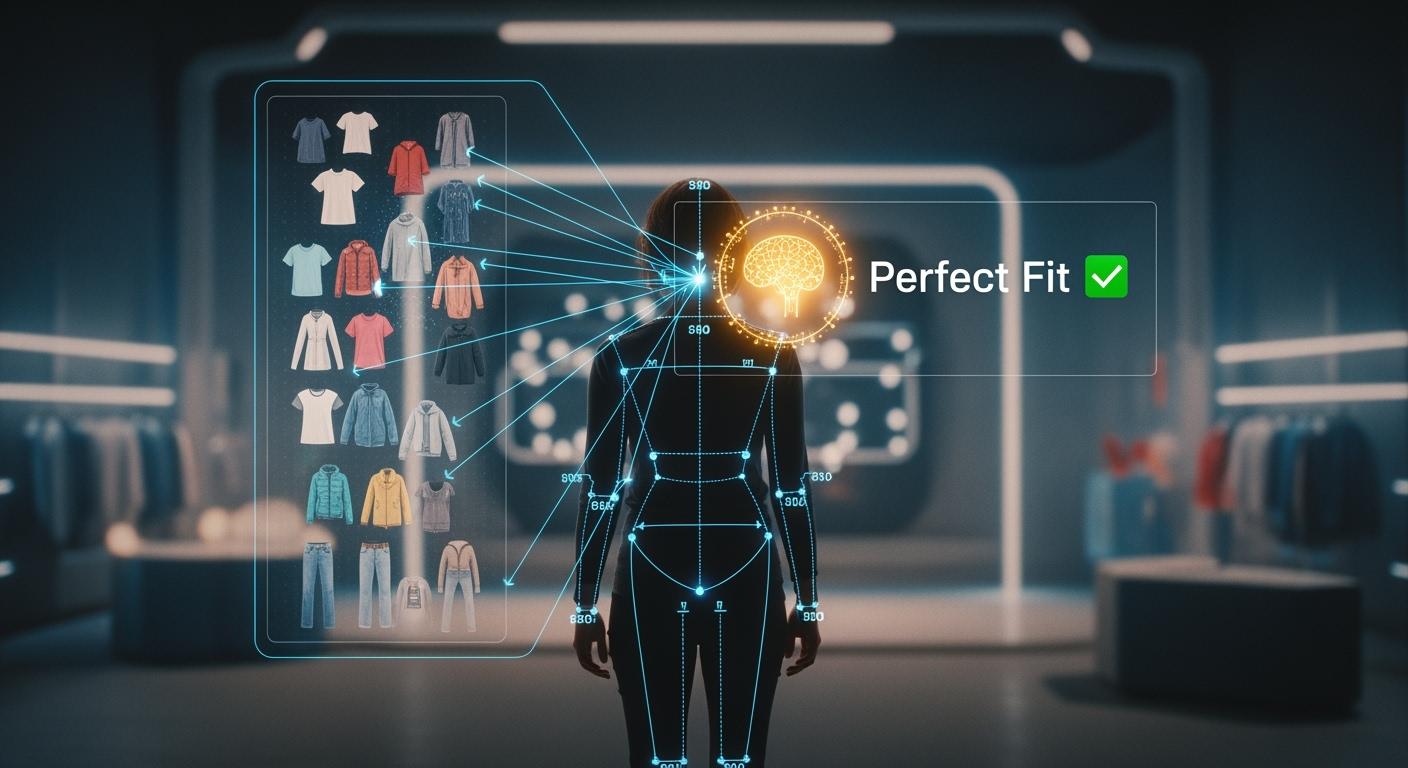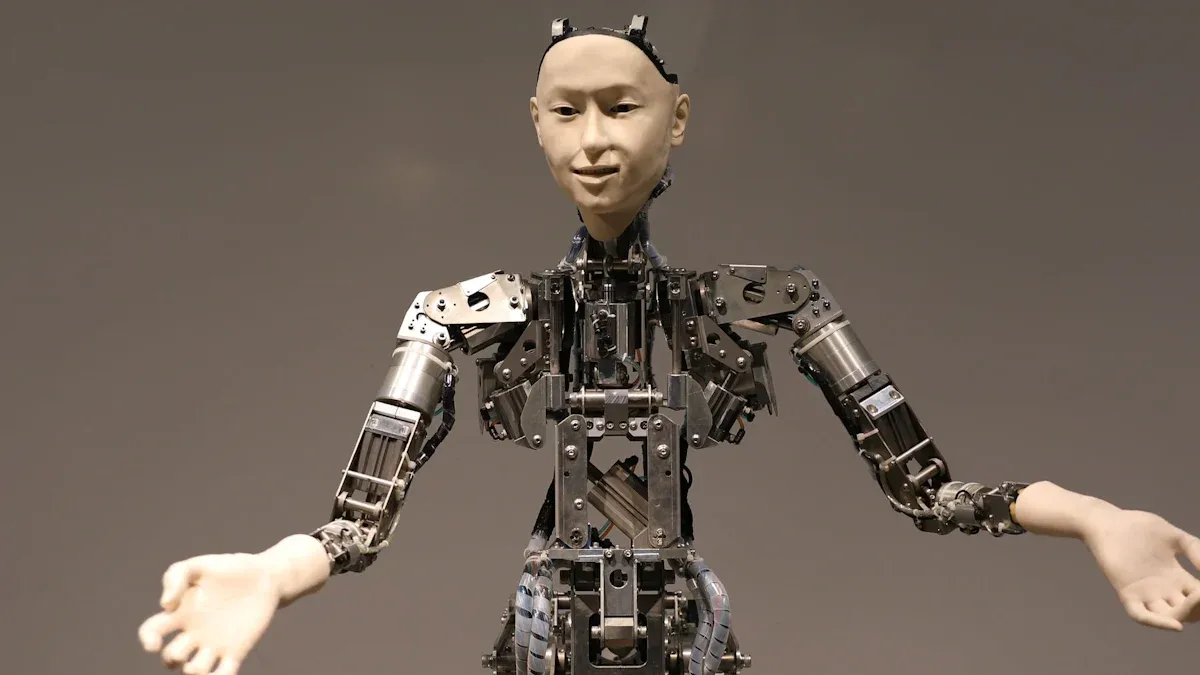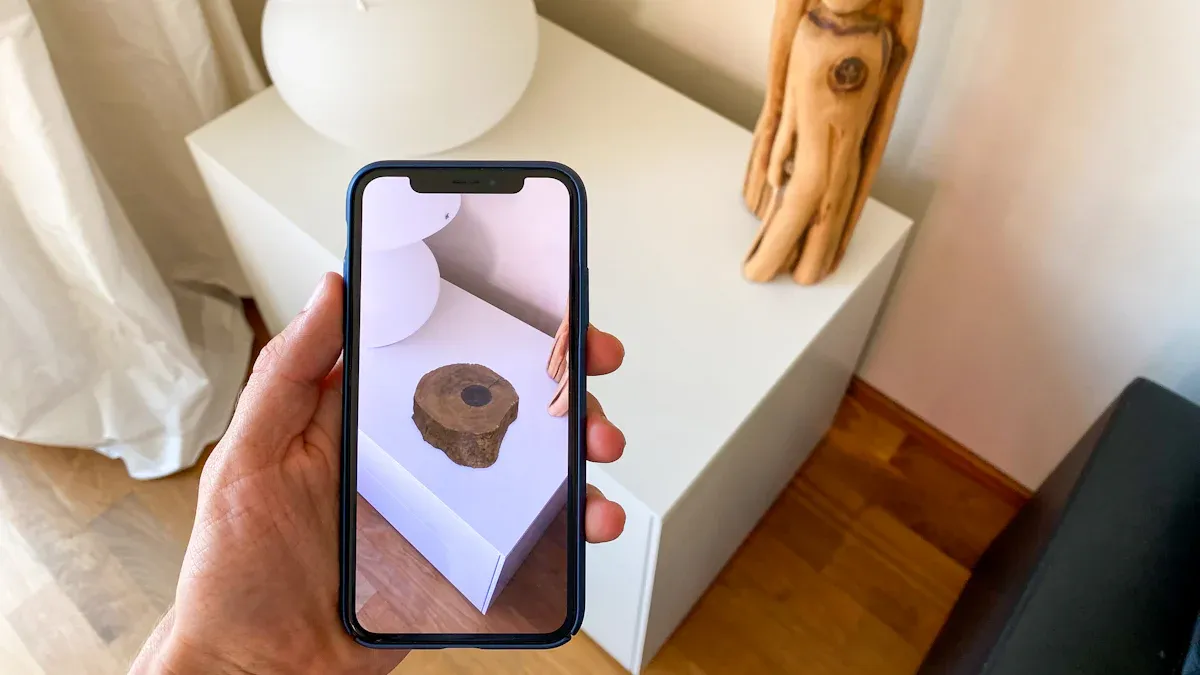
Online shoppers frequently encounter size and fit challenges. Incorrect sizing is the top reason for apparel returns, causing major customer fit issues. Retailers now use machine learning to solve this problem. These ai-powered innovations analyze data to improve size accuracy and provide clear size guidance. The fashion industry's investment in this technology is growing rapidly.
| Metric | 2019 Value | 2024 Value |
|---|---|---|
| Global AI in Fashion Market | USD 228 Million | USD 1,260 Million |
This powerful machine learning delivers personalized size recommendations, helping every customer find their best-fitting size with confidence.
How Machine Learning Analyzes Body Data

At its core, a fit insights tool uses data to build a digital representation of a shopper. The process begins with basic information and evolves into a sophisticated model, creating a foundation for highly accurate size predictions.
From Basic Inputs to Body Models
Machine learning algorithms start with simple user-provided data. Shoppers input their age, weight, and height. The system takes a multivariate approach, using these few details as key features. Advanced algorithms, like random forests, then predict up to 36 other body measurements. This process turns basic stats into a comprehensive body profile.
The algorithms focus on the most impactful measurements for determining clothing fit. These often include:
- Height
- Shoulder width
- Waist circumference
- Head circumference
This data allows the machine learning system to construct a precise digital body model, creating a virtual stand-in for the customer. Companies like Browzwear and Reactive Reality are pioneering this technology, helping brands generate these hyper-realistic models for e-commerce.
Matching Models to Garment Specs
Once the system creates a body model, it compares that model against a garment's technical specifications. A deep learning-based algorithm analyzes the clothing's pattern data and the body's dimensions to predict the fit. It treats this as a classification problem, determining if the match is "good" or "poor."
The system scans the garment's feature lines and calculates a matching rate against the corresponding parts of the body model. It even accounts for necessary relaxation in the fabric to ensure a comfortable fit, not just a tight one.
This intelligent comparison moves beyond simple chest or waist numbers. The machine learning process understands how a garment will drape and stretch over a specific body shape, leading to a final, reliable size recommendation.
Leveraging Purchase and Return History
A customer's shopping history provides a powerful feedback loop for size prediction algorithms. Every purchase and return offers direct data on what works and what does not. This information allows the machine learning system to understand a user's unique fit preferences and tolerances, moving beyond simple body measurements.
Learning From Kept and Returned Items
Each transaction tells a story. A kept item signals a successful size match and a happy customer. A returned item, especially when the reason is "poor fit," signals a failure. The algorithm logs these outcomes. It learns from both positive and negative results to improve future product recommendations. This process helps personalize the customer journey.
Research shows this data has a complex impact. A history of successful purchases often leads to fewer returns. However, a history of frequent returns can indicate a user is more likely to return items in the future. The system must balance these effects to make an accurate prediction.
A fit insights tool does not just see a "return." It analyzes the reason for the return. This context is crucial for the machine learning model to distinguish between a size issue and a problem with color or style.
Refining Recommendations Over Time
The sizing algorithm becomes more intelligent with every interaction. Each purchase, keep, or return is a new data point that refines the user's profile. Continuous engagement allows the algorithm to sharpen its understanding of a person's specific tastes and body shape.
This learning process ensures the system's accuracy improves over time. The first recommendation is a strong starting point. The tenth recommendation is significantly more personalized and reliable. This evolution leads to better product recommendations and a more confident shopping experience for the customer. The system adapts, ensuring that as a user's preferences or body changes, the suggestions change with them.
Comparing to Similar Shoppers
Machine learning can predict a shopper's size by looking at the experiences of others. This method is called collaborative filtering. The system essentially finds a user's "size twin"—another person with a similar body and shopping history. It then uses that twin's success to inform size suggestions. This collective intelligence provides powerful and accurate product recommendations.
Identifying Your 'Size Twin'
A fit insights tool identifies a size twin by analyzing multiple data points. The algorithm searches for shoppers who share key characteristics. These attributes create a detailed profile for comparison. The most important factors include:
- Customer gender and age
- Specific body type (e.g., curvy, muscular)
- Height and other unique attributes like a large bust or muscular thighs
- Activities the customer enjoys
This process raises privacy questions since it uses personal data. Users may hesitate to share information. To protect shoppers, systems can use privacy-preserving techniques. These methods add random noise to user profiles. This action masks individual preferences while still allowing the machine learning model to find reliable matches.
Recommending Proven Sizes
After identifying a group of size twins, the system analyzes their purchase histories. It looks for items they bought and, most importantly, kept. This data reveals which sizes worked for people with a similar body shape and fit preference. The algorithm learns from these proven successes.
The system does not just guess. It makes a data-driven decision based on the collective experience of hundreds or thousands of similar shoppers.
This analysis results in highly dependable product recommendations. If ten shoppers with a user's body profile successfully purchased a size Medium in a specific jacket, the system will confidently recommend that size. This approach leverages community data to solve individual fit problems, increasing customer confidence with every purchase.
Translating Sizing Across Brands
Sizing is not universal across the fashion industry. A shopper might be a size 8 at Zara but a size 12 at Reiss, creating confusion and frustrating returns. Machine learning acts as a powerful translation engine. It deciphers the unique sizing language of each brand to provide a single, reliable recommendation for the customer. This technology removes the guesswork from shopping at new or unfamiliar stores.
Mapping Brand-Specific Differences
A fit algorithm first learns each brand's specific sizing patterns. It analyzes massive datasets to understand these inconsistencies. The system gathers information from public resources like ASTM size standards, internal garment specifications, and fit model measurements. It then uses several methods to map these differences:
- Clustering: Some systems group shoppers with similar body types and purchase histories. They learn which sizes these groups kept or returned for specific brands.
- Measurement Comparison: Other tools estimate a user's body measurements. They then compare these estimates directly to a brand's detailed product dimensions.
- Hybrid Models: An advanced approach uses basic inputs for an initial guess. It then allows users to upload a photo for a more precise, computer vision-based refinement.
This process allows the machine learning model to quantify known sizing issues. For example, it learns that H&M bottoms often run small, while Old Navy clothing tends to be oversized.
Recommending Equivalent Sizes
Once the system understands each brand's unique fit, it can recommend an equivalent size with high accuracy. The process starts when a shopper provides basic information like their height and weight. The technology uses this input to generate a detailed digital twin with dozens of accurate body measurements. This model is then compared against the technical data of a garment from a new brand.
The algorithm connects multiple data streams to make its decision. It considers sales data, return reasons, customer body information, and unique product details to generate its final product recommendations.
Amazon's deep learning algorithm, for instance, studies the sizing relationships between millions of products. It learns from anonymized purchases to understand which sizes similar customers bought and kept. This intelligent analysis allows the system to confidently tell a user who wears a size 10 in one brand that they will need a size 12 in another, ensuring a perfect fit every time.
Using Computer Vision for Fit

Computer vision offers a futuristic solution to online sizing. This technology uses a device's camera to capture a shopper's body data. It transforms simple images or videos into precise measurements, creating a new level of personalization. This visual approach removes the need for manual tape measures and guesswork.
Extracting Measurements From Photos
Advanced algorithms can extract a person's body measurements from a single photograph. A user simply uploads a full-body picture. The system's machine learning model then identifies key body points and calculates dimensions. This method is surprisingly accurate and often surpasses manual efforts.
The system's precision is a key advantage. It consistently outperforms user tape measurements, which can have errors larger than 2.5 cm.
The accuracy of this technology rivals that of professional equipment. Typical error rates are impressively low:
- Mean Absolute Error for major circumferences: 0.5 to 1.5 cm
- Mean Absolute Error for length measurements: 1 to 2 cm
- Accuracy approaches the precision of 3D body scanners.
This high level of accuracy provides a reliable foundation for size recommendations.
Creating 3D Body Scans
Some applications create a complete 3D body model for the ultimate virtual fitting. This process often uses a technique called photogrammetry. A shopper takes a short video or a series of photos from different angles using their smartphone. The software then stitches these images together to construct a detailed 3D avatar.
Companies like Nettelo use an AI-based 3D modeling engine to turn a selfie into an accurate digital twin. This technology enables remote fittings with high confidence. Several methods help create these models:
- Photogrammetry: Multiple photos are combined to build a 3D model.
- LiDAR Scanning: Newer iPhones use LiDAR sensors for highly accurate depth mapping.
- Specialized Suits: Systems like ZOZOFit use a patterned suit to help the camera capture precise data points.
Once created, algorithms analyze the 3D model's geometry to calculate exact measurements, ensuring the perfect fit.
Machine learning uses several powerful methods to find the best-fitting size for online shoppers. These systems combine multiple techniques to deliver accurate results.
- Analyzing body data
- Learning from purchase history
- Comparing to similar shoppers
- Translating brand sizing
- Using visual information
This technology creates highly personalized product recommendations. The advanced machine learning improves the overall customer experience. Shoppers receive reliable product recommendations, which reduces returns and builds confidence in their purchases.
FAQ
Is my personal data safe?
Yes, protecting shopper data is a priority. Companies use privacy-preserving methods to anonymize information. This action masks individual details while still allowing the machine learning model to make accurate predictions. Your personal identity remains secure throughout the process.
How accurate are the size recommendations?
The system's accuracy is very high and improves over time. It combines multiple data sources like your body profile, purchase history, and brand sizing. The recommendations become more precise with each interaction, significantly reducing the chance of a poor fit.
What happens if I return an item?
A return provides valuable feedback to the algorithm. The system learns from the return reason, especially for fit issues. This new data point helps refine your personal size profile, ensuring future recommendations are even more accurate.
See Also
Machine Learning: Predicting Fashion Trends to Significantly Boost Retail Sales
Fashion Retail's Future: Predictive Models Shaping 2025 Trends
Balancing Fashion: Predictive Analytics Optimizes Supply and Consumer Demand
Accurate Fashion Forecasts: Leveraging Sales Data for Future Insights